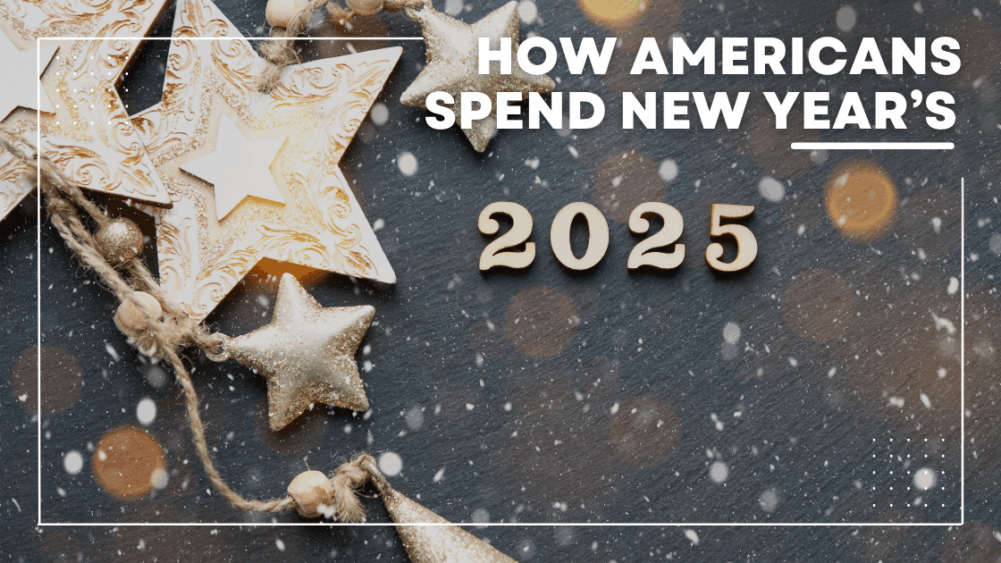Hello everyone! I’m Nami, living in Los Angeles. A bit late, but Happy New Year!
Today, I’d like to share how people in the U.S. typically spend the year-end and New Year’s holidays.
The Holiday Season in America
The holiday season starts around Thanksgiving and ramps up toward Christmas. As Christmas approaches, work slows down significantly. Christmas Day (December 25th) is a national holiday, and while businesses usually operate normally from December 26th to 30th, both December 31st and January 1st are generally off.
Many people take paid leave after Christmas, so workplaces become very quiet with few meetings during this period.
How Americans Celebrate New Year’s
Unlike Japan, where family time is central during year-end, in the U.S., it’s common to spend New Year’s Eve with friends. Parties and fireworks are popular ways to celebrate. I’ve welcomed the New Year at home parties both last year and this year. 🎉
There aren’t usually special decorations for New Year’s — the Christmas decorations tend to stay up through early January.
At around 11:45 pm, people start getting excited. The countdown begins about 10 seconds before midnight, and at midnight, fireworks and kisses mark the start of the new year. After that, most people head home.
While the Times Square ball drop in New York City is famous worldwide, many other cities host large events with live music and fireworks.
New Year’s Day and Beyond
New Year’s Day is often quiet. Many spend it relaxing at home, setting resolutions, or planning new goals. Watching football games with family or friends is also a popular tradition.
Most people return to work on January 2nd, though some take the day off. Unlike Japan’s “first three days of the year” tradition, only January 1st is considered special in the U.S.
Differences Between the U.S. and Japan
Holiday Timing and Greetings:
In Japan, many work through December with fewer breaks, while in the U.S., many companies give about a week off at the end of the year. For example, when January 4th and 5th fall on a weekend, people can enjoy up to nine consecutive days off.
Japanese greetings are also different. People say “良いお年を” (Have a good year) before New Year’s and “明けましておめでとうございます” (Happy New Year) after. In the U.S., “Merry Christmas” and “Happy New Year” are often said together during the holiday season.
Different Traditions and Festivities
In Japan, year-end TV shows like “Kohaku Uta Gassen” and “Gaki no Tsukai,” and traditions like listening to the temple bells at midnight are popular. The U.S. tends to have less emphasis on quiet reflection, favoring lively countdown events. Also, watching New Year’s TV specials and events like the Hakone Ekiden race is uniquely Japanese.
New Year’s Culture
While visiting shrines for Hatsumode is a key part of Japanese New Year, this tradition is mostly absent in the U.S. Few Americans attend church services on New Year’s Day, and celebrations vary widely by region and community.
Gift-giving happens at Christmas in the U.S., but not during New Year’s. In contrast, Japanese children receive “otoshidama” (New Year’s money gifts), highlighting another cultural difference.
Food Culture
Food customs also differ significantly. In the U.S., Christmas dinner (turkey, ham, mashed potatoes, etc.) is the big holiday meal, but there’s no specific New Year’s cuisine. Some regions eat black-eyed peas for good luck.
In Japan, year-end soba noodles and New Year’s traditional dishes like osechi and ozoni are staples, adding a special flavor to the season.
Both countries have unique and charming ways to celebrate the year-end and New Year. How do you spend this time in your country? Please share in the comments!
Next time, I’ll share a “to-do list” for newcomers to the U.S. after the holiday season. See you then!
